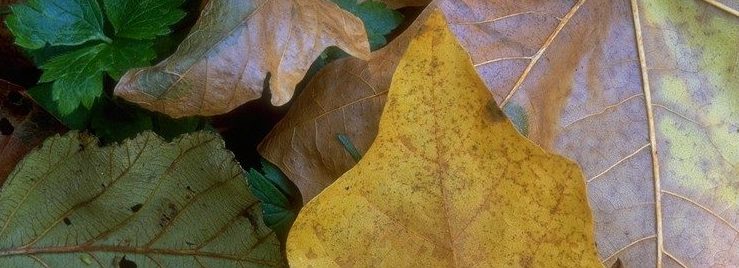
Welcome to Fall!
Fall is here and the colors are changing! Well…sort of. Here in the Pacific Northwest we don’t get the landscape-wide color changes that happen in places like the Eastern Seaboard. As most of you might already know, our landscape is dominated by evergreen trees, which as the name suggests, stay green year-round.
Why is that anyway? Nearly every other coastal forest at our latitude is mixed-deciduous or deciduous dominated (deciduous meaning that their leaves change color and drop in autumn). Well it turns out it has to do with the weather, but not in the way you might think. Seattle has a rightful reputation for rainfall, with an average of 152 rainy days a year (and over 200 cloudy days a year)!
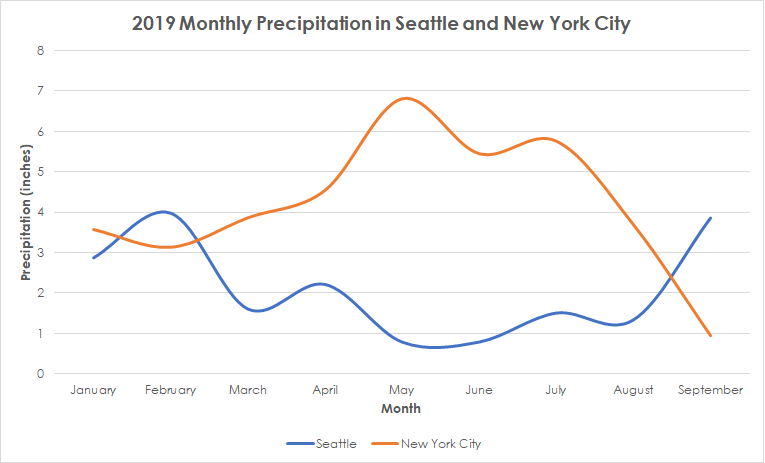
Data from National Weather Service
However, many Seattleites forget just how dry the summers are. As an example, this past July we got around 1.5 inches of rainfall (which is actually more than usual in July). By contrast, New York City got 5.77 inches of rainfall; that’s nearly 5 times as much precipitation as Seattle!
Leaf Lingo!
Evergreen – Leaves or needles stay green all year round.
Deciduous -Leaves change color in autumn and drop in winter.
Coniferous – Trees that Reproduce via cones. Non-flowering trees.
Broadleaf – Leaves are broad (excludes needles)
The difference in summer rain is key because deciduous trees can only grow when their leaves are out and photosynthesizing. The peak growing season for these trees kicks into gear when their leaves are fully formed, and ends when they begin to change color and drop in fall. Without adequate rainfall during the growing season, most deciduous trees are unable to grow enough to compete with evergreen plants, which are able to gather sunlight year-round. So while the East coasters are lamenting the loss of all vegetation in their never-ending winters, we get to see life thriving all around us 12 months out of the year.
But all that aside, let’s not forget that we get fall color too! While many of the fall colors you might see are introduced species, there are still plenty of native deciduous trees you can spot this time of year. Six of our favorites are listed below!
1. Bigleaf Maple (Acer macrophyllum)
Bigleaf maples are an abundant deciduous tree in the region at low elevations (under 2,000 feet), and the deciduous tree you’re most likely to spot in Seattle. In autumn, their leaves turn yellow, with an occasional hint of red. These amazing trees can grow to 100 feet tall, with an equally wide canopy, and leaves almost a foot wide. In urban and suburban areas, bigleaf maple is one of the few species that can support epiphytes like moss.

Photo by Susan McDougall
They are often covered in moss, and can become so moss covered that soil forms on the tree which can support the growth of other plants, commonly Licorice Fern. In addition to supporting additional soil and plant communities the bigleaf maple itself can send out tiny canopy roots into the soil that has formed on its branches to get additional water and nutrients.
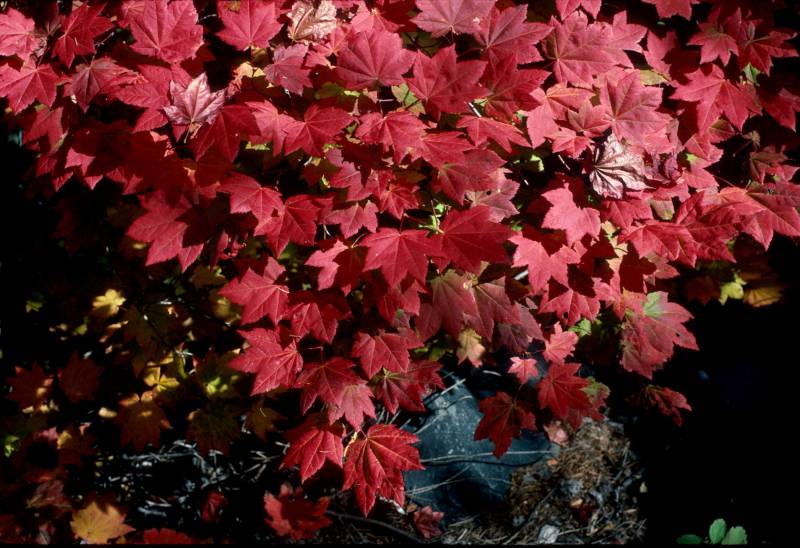
Photo by Clayton Antieau
2. Vine Maple (Acer circinatum)
Vine maple is a native understory tree/shrub. Younger shrubs often have distinctly green stems, that brown with age. The leaves are round with 7-9 points. You’ll find it in wetter areas usually growing in the shade of taller conifers. If you’re out hiking this season, you’d be hard pressed to miss its vibrant fall colors. Vine maple is one of the only shrubs in the region to have bright red leaves in fall. However, you might also catch it in shades of yellow or orange. Regardless of the hue, vine maple steals the show in fall.
3.Pacific Dogwood (Cornus nuttallii)
While most will remember Pacific dogwoods for their beautiful white flowers in spring and early fall, you can also spot the brilliant pink-red hue of their leaves as fall goes into full swing. The leaves are opposite and ovate, with characteristic dogwood veins curving parallel to the leaf edges. The tree can grow up to 20 m tall, but typically doesn’t in the wild due to risk of the dogwood anthracnose disease. Historically, the wood has been used for such things as cabinets, piano keys, and daggers. The blossom is also the floral emblem of British Columbia.

Photo by Siera Nystrom
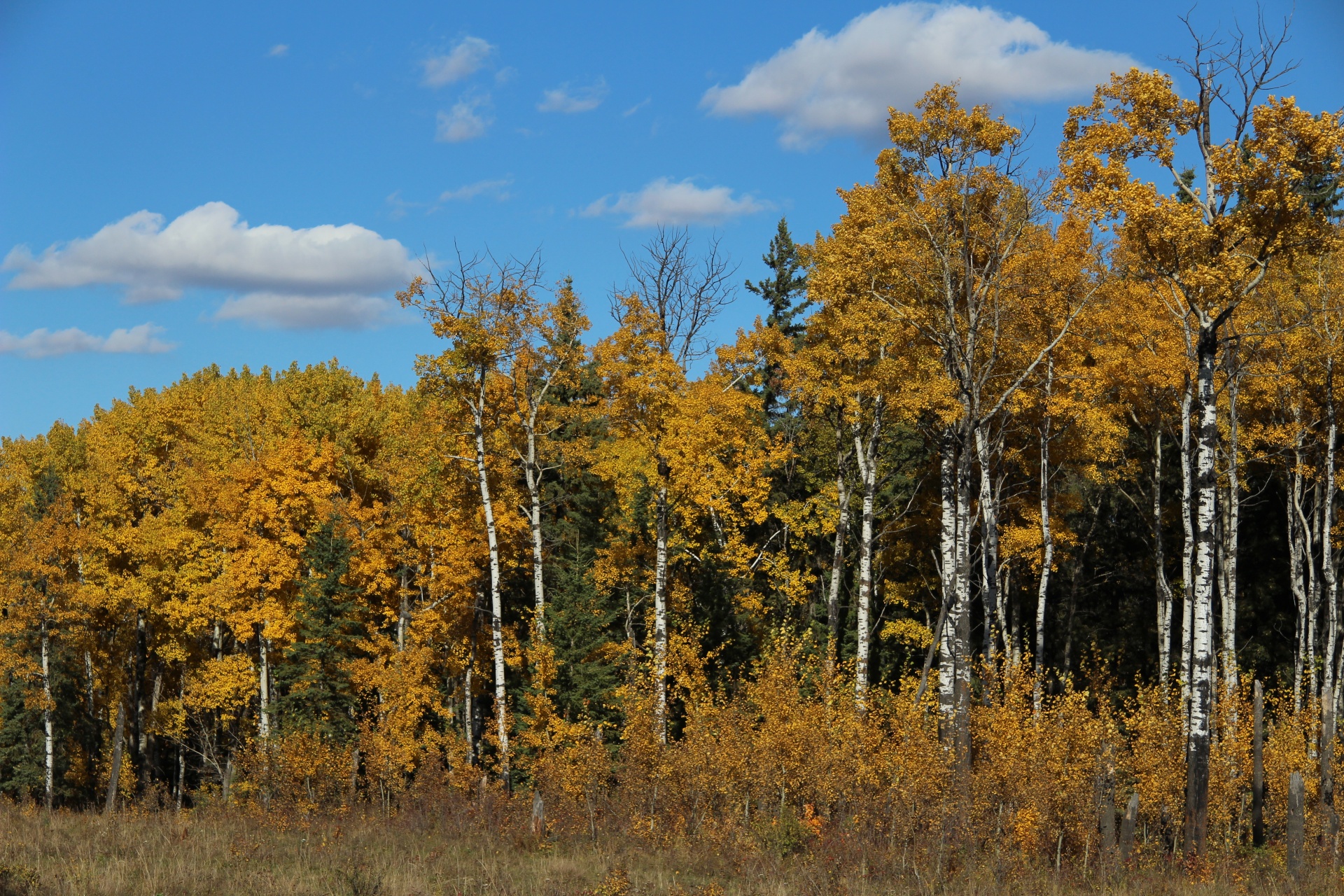
Photo by Kevin Casper
4. Paper Birch (Betula papyrifera)
Paper birches are most distinct for their bright white bark, which peels in papery strips. In the fall, their leaves turn a brilliant yellow which complements their distinctive white bark. Paper birches are typically tall and slender, growing up to 30 meters tall. However, they are usually short lived, living only 60-70 years. The sap can be used in syrups, wine, and beer!
5. Quaking Aspen (Populus tremuloides)
Quaking aspen – like paper birch – is notable for its bright white bark and golden autumn leaves. They are the most widely distributed tree species in North America, as they are present in all Canadian provinces, 37 American states, and several regions of Mexico. They can grow up to 30 meters tall but usually less than 15. Quaking aspen is noted for its aggressive root system, which is also useful in restoration for erosion control. The leaves are small and ovate, and like cottonwoods, tremble in the wind.
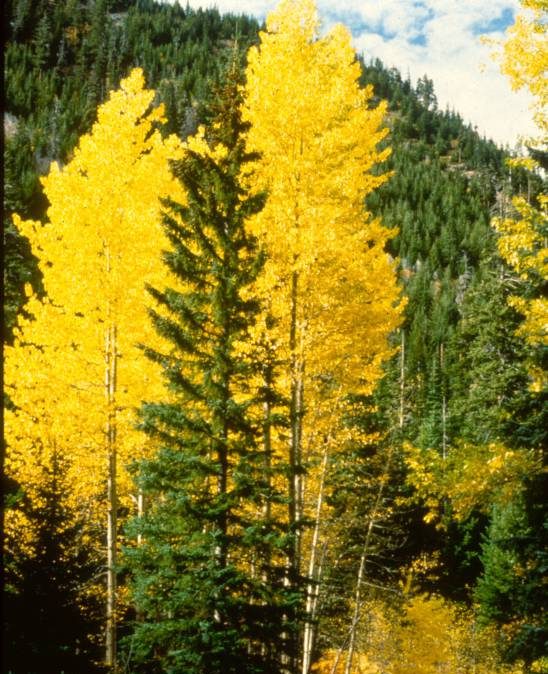
Photo by Clayton Antieau

Photo by Susan McDougall
6. Black Cottonwood (Populus balsamifera ssp. trichocarpa)
Black cottonwoods are large trees, growing up to 50 meters tall with full crowns. The bark becomes deeply furrowed with age and is a dark grey. Black cottonwood and its close relatives (members of the genus Populus) are distinctive for light colored leaves that tremble and shake with even the slightest wind. Though not as spectacular as some of its close relatives, Black cottonwood has yellow leaves in the fall that tower above most other deciduous species. These trees also produce lots of resin from their buds, which has a sweet fragrance that drifts through whole forests. Many bees collect the resin for use in trapping intruders and protecting the hive.
Experience Fall!
The Green Seattle Partnership is committed to providing opportunities to experience and engage with nature. Come join your community members in your local parks at the multitude of work events hosted each and every week! You can experience fall, and help Seattle’s forests thrive all at once. You can find events near you at our site here.
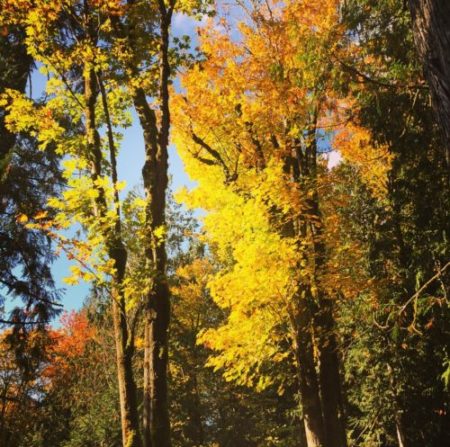
Photo by Fate Syewoangnuan
You can browse more images from the photographers cited in this post at the Burke Herbarium Image Collection.
More info about these trees can be found at the NRCS site, or in Plants of the Pacific Northwest Coast, a plant guide written by Jim Pojar and Andy McKinnon.

Trackbacks/Pingbacks